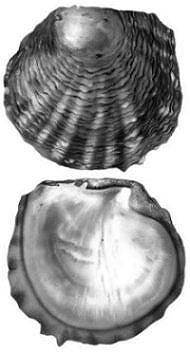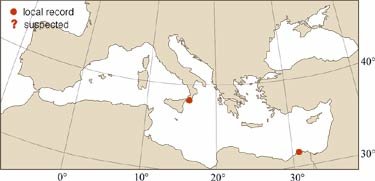
|
Relevant Synonyms
Misidentification
|
|
| drawing: Tuvia Kurz |
|
SHORT
DESCRIPTION
color :
externally greyish green with white or yellowish radial rows of scales. Internally very pearly with a pale blue or violet cast. Margins brown to black.
common size :
to 200 mm in height. 250 mm in the Pacific (Cernohorsky, 1972). |
DISTINGUISHING CHARACTERISTICS
BIOLOGY / ECOLOGY
habitat :
in the Indo-Pacific, lives attached by byssus to hard substrata (under stones, in crevices of rocks, algae), intertidal and subtidal (Cernohorsky, 1972). In Egypt, at depths less than 18m. |
|
1st
Mediterranean record
|

|
|
DISTRIBUTION
|
ESTABLISHMENT SUCCESS
speculated reasons for success :
|
|
|
MODE OF
INTRODUCTION |
IMPORTANCE TO
HUMANS |
|
KEY
REFERENCES
|
|
|
 Meleagrina margaritifera
Meleagrina margaritifera